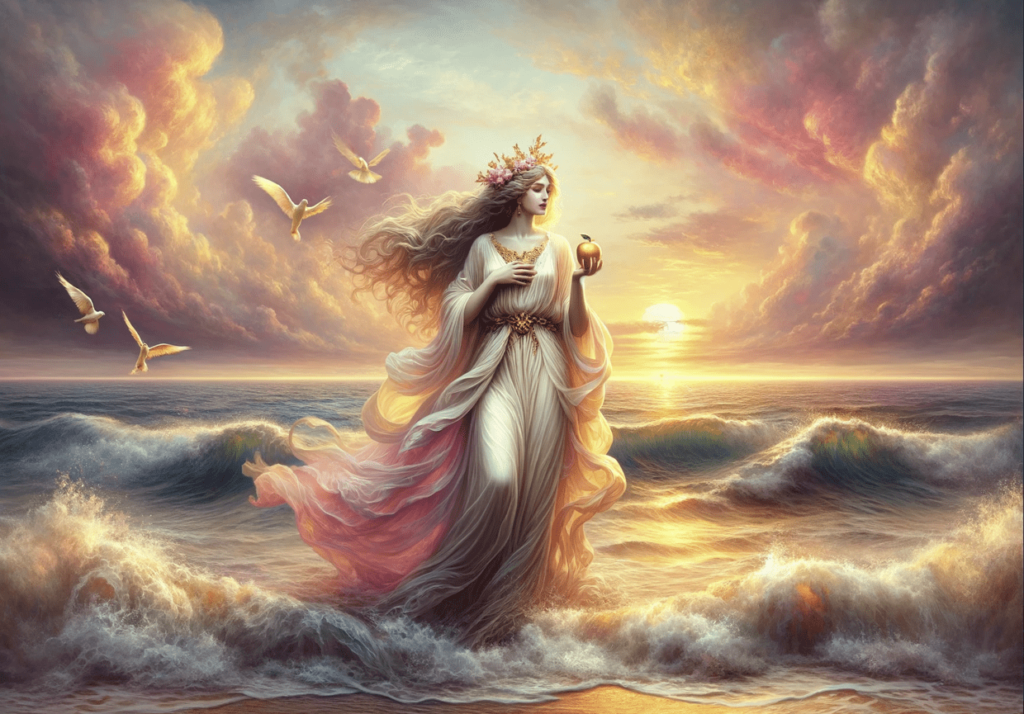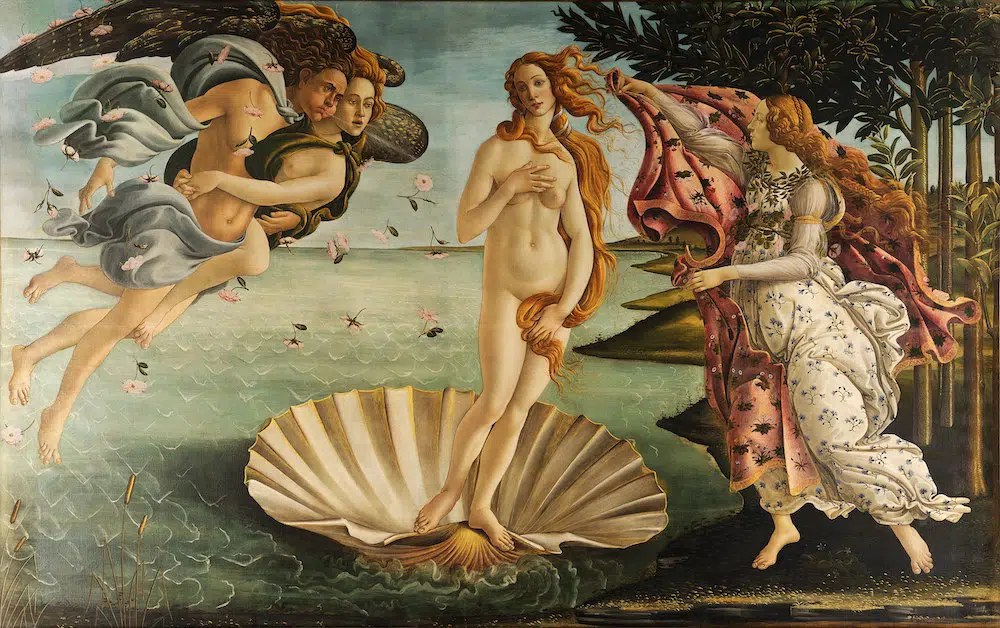
Aphrodite, ancient Greece’s embodiment of love, beauty, and desire, will be forever known as one of the most revered deities in the nation’s mythology.
Her allure exceeds the limits of Mount Olympus, impacting our modern culture with a legacy that inspires art, literature, and the universal search for love and beauty. From her mythical birth out of the foam of the crystal-clear Mediterranean Sea to her intricate relations with gods and mortals alike, Aphrodite’s stories have captivated the imagination of generations. Let’s explore how her story continues to influence our contemporary world, shaping our perceptions of love and beauty.
Origins and Mythology
Aphrodite’s origins are as captivating as her persona. There are different tales about her birth, offering a glimpse into the ancient world’s efforts to personify the irresistible nature of love and beauty.
According to one of the most celebrated myths, written by Hesiod, Aphrodite was born from the foam of the sea (‘aphros’ in Greek) near the island of Cythera. According to this myth, Aphrodite emerged fully formed into the world but, soon after, went to the island of Cyprus.
Another tradition, noted by Homer, suggests she was the daughter of Zeus and Dione, an old figure and partner of Zeus who lived at Dodona. This dual origin story highlights the goddess’s multifaceted role in Greek mythology, embodying celestial and oceanic elements of creation.
Aphrodite’s influence extends beyond her birth. It plays pivotal roles in numerous myths and legendary conflicts. Perhaps most notably, her participation in the judgment of Paris is credited with igniting the Trojan War. This was a testament of her power to sway the hearts of gods and mortals alike.
Her countless relationships, including her marriage to Hephaestus and relationships with Ares, Adonis, and Anchises, also showcase her complex nature. Aphrodite’s intertwining of love, jealousy, and beauty has always been at the forefront of her presence at the heart of Greek mythology.
Symbols and Attributes
Aphrodite’s divine nature is very evident in her symbols and attributes. Each one of them clearly reflects some important aspects of her power over love and beauty. The dove, swan, and sparrow, for example, were sacred to her.
They symbolized the gentle and lustrous faces of love. Meanwhile, the myrtle wreath, rose, and apple spoke to the seductive and fertile qualities associated with her. However, these symbols were not only prevalent in ancient Greek worship and rituals. They were also prominently featured in classical art, serving as timeless reminders of Aphrodite’s elegant presence.
Aphrodite’s Influence on Art and Literature

The depiction of Aphrodite in art and literature plays a significant role in the way societies perceived her role. By making her the focal point of many works, artists of all generations immortalized her image as an icon of beauty and love. Ancient sculptures and paintings often portrayed her in various states of grace and sensuality. This was, of course, epitomized by works such as the Venus de Milo.
The Renaissance period also witnessed a resurgence of interest in classical mythology. Artists such as Sandro Botticelli captured Aphrodite’s essence in masterpieces such as The Birth of Venus. Therein, Botticelli blended mythological themes with the period’s artistic innovations, creating a true masterpiece.
Modern Cultural Impact
Aphrodite’s legacy, however, goes beyond ancient texts and sculptures. It profoundly affects our modern viewpoint in various ways. For example, her influence has deeply shaped the norms of what is and isn’t considered beautiful in today’s world.
Fashion and beauty industries often draw on Aphrodite’s symbolism to evoke allure and desirability. Additionally, her mythological narratives have inspired works of literature and films, reflecting the timeless appeal of her stories.
An Everlasting Influence
Aphrodite, the Greek goddess of love, continues to captivate the imagination of millions of people across the globe. She embodies the essence of beauty and desire. Her influence, deeply rooted in ancient Greek mythology, transcends time. It reminds us of the enduring power of love and the complex nature of human relationships.
As one explores her legacy, we uncover not just the stories of a goddess but a mirror that reflects our own cultural and personal aspirations towards love, beauty, and harmony.
See all the latest news from Greece and the world at Greekreporter.com. Contact our newsroom to report an update or send your story, photos and videos. Follow GR on Google News and subscribe here to our daily email!



